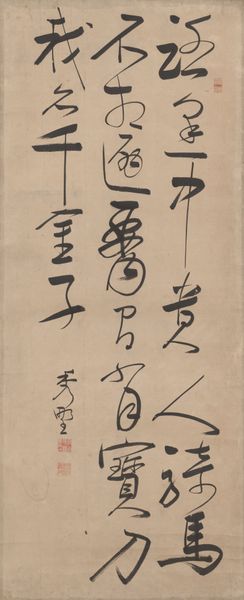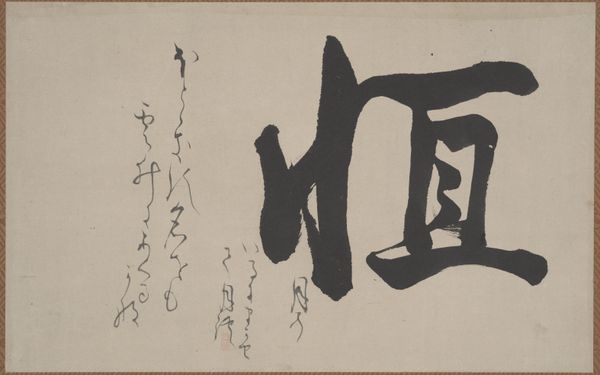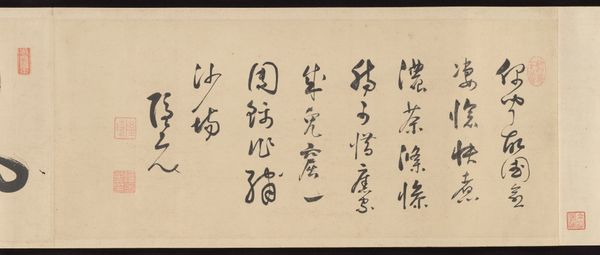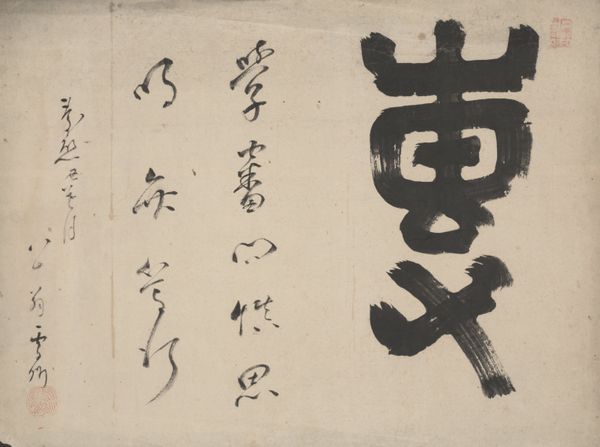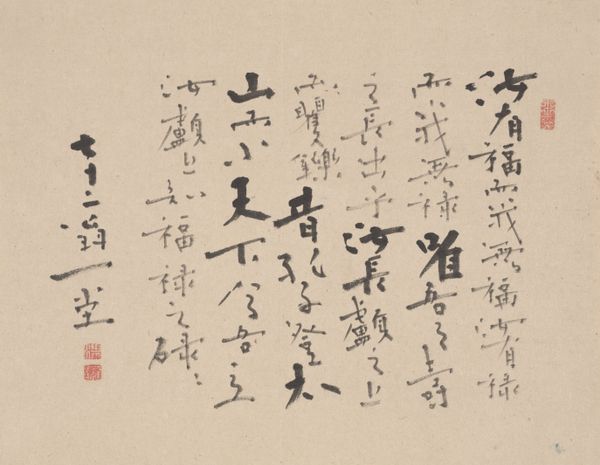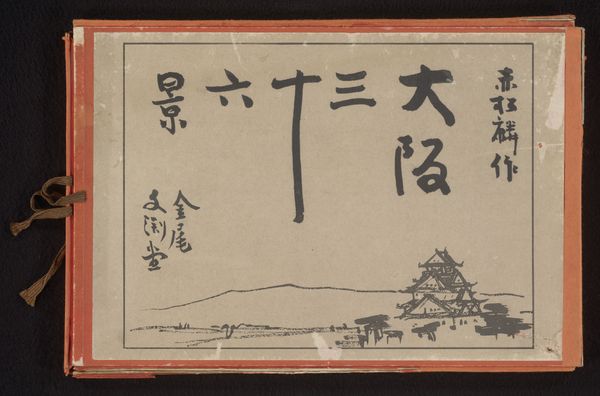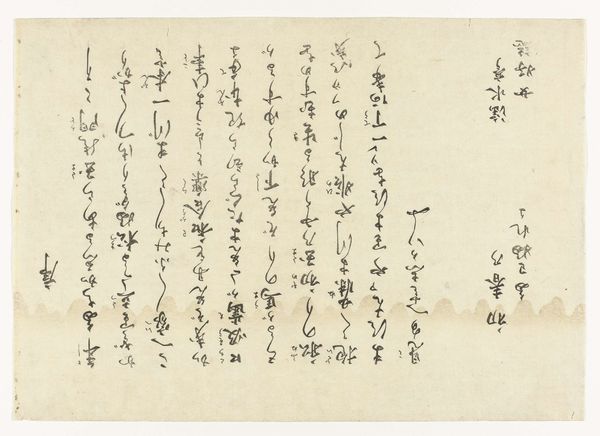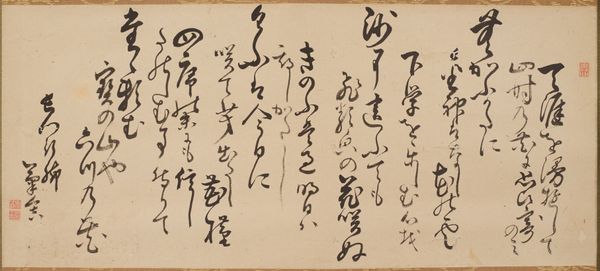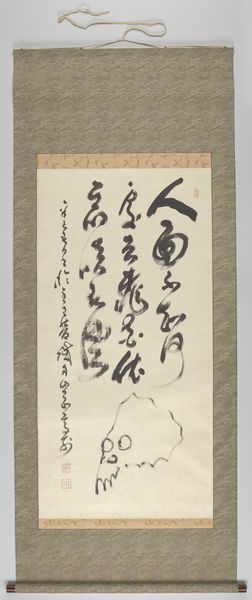
paper, ink
#
ink paper printed
#
asian-art
#
paper
#
ink
#
abstraction
#
line
#
calligraphy
Dimensions: height 246 mm, width 368 mm
Copyright: Rijks Museum: Open Domain
Editor: Right now we are looking at "Gedichtblad," or "Poem Sheet," a work in ink on paper crafted by Akamatsu Rinsaku in 1947. The monochromatic simplicity strikes me first – it feels sparse and incredibly deliberate. What visual elements stand out to you? Curator: The most compelling aspect, from a formal perspective, is the dynamic interplay between the brushstrokes themselves. Observe how the artist utilizes varying pressure and speed to create both bold, decisive marks and more delicate, hesitant lines. Consider how the blank space interacts with these graphic forms. Does this contrast evoke a certain rhythm or tension? Editor: Absolutely. The varying weight of the strokes definitely gives it a musicality. But if it's purely about the marks on the paper, does the text matter? Is the meaning secondary to the composition? Curator: The ‘meaning’, as you put it, arises directly from the relationship between the calligraphic marks and the structural principles they embody. Whether the viewer understands the literal meaning is less significant than their experience of the composition itself. The rhythm of the brushstrokes, their placement on the page, and the balance of positive and negative space creates a unique aesthetic experience, does it not? Editor: I see your point. It's about appreciating the balance, the weight, the pure form. It's like looking at a musical score for the beauty of the notes rather than the melody itself. Curator: Precisely! The poem functions more as a catalyst, setting in motion a chain of visual events that culminate in an aesthetic experience. One might also investigate its use of texture as another mode for expression. Editor: That makes me rethink my initial reaction. Now I see that it's less about what the poem says and more about the aesthetic of each stroke. Curator: And how they interact! That interplay of visual elements to form an integrated whole. The sum is definitely more compelling than the parts.
Comments
No comments
Be the first to comment and join the conversation on the ultimate creative platform.
